The introduction to SBC heads is an exciting topic for any car enthusiast. So it is essential to know how to clean SBC heads. SBC stands for small block Chevy, which is a V8 engine that has been popular among car enthusiasts for decades.
SBC heads are the cylinder heads that sit on top of the engine block and are responsible for sealing the combustion chamber and housing the valves. These cylinder heads can significantly impact the engine’s performance, with factors such as flow rate, port size, and valve size affecting the engine’s power output.
SBC heads come in various shapes and sizes depending on the desired performance level. Some designers optimize heads for maximum airflow, while others optimize them for low-end torque. Chevrolet introduced the Vortec head in the mid-1990s, which features improved airflow and combustion efficiency and has become the most popular SBC head.
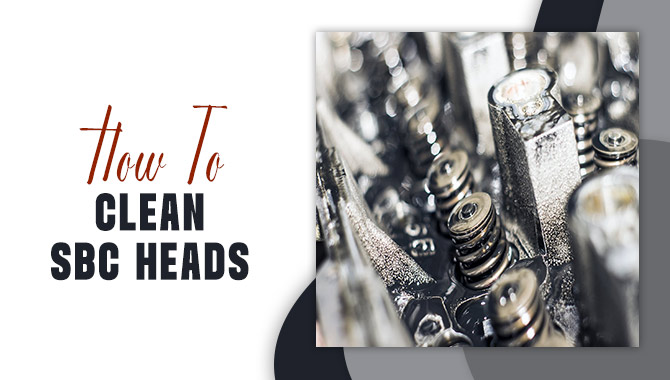
Symptoms Of Dirty SBC Heads
Symptoms of dirty SBC heads can cause various issues for your engine. One of the most common symptoms is a loss of power or poor performance. This is because dirty heads can restrict the flow of air and fuel into the engine, which can lead to a decrease in horsepower and torque.
Another symptom is rough idling or stalling. This is because the dirty heads can cause misfires in the cylinders, which can lead to a rough-running engine or even a complete loss of power.
In addition, dirty heads can also cause overheating, as they can prevent the proper circulation of coolant through the engine. If left untreated, this can lead to increased engine temperatures and even engine damage.
Other symptoms of dirty SBC heads include decreased fuel efficiency, increased emissions, and a buildup of carbon deposits on the spark plugs. If you notice any of these symptoms, it is important to have your engine inspected by a professional mechanic to determine the cause and prevent further damage to your engine.
Tools And Materials Needed For Cleaning SBC Heads
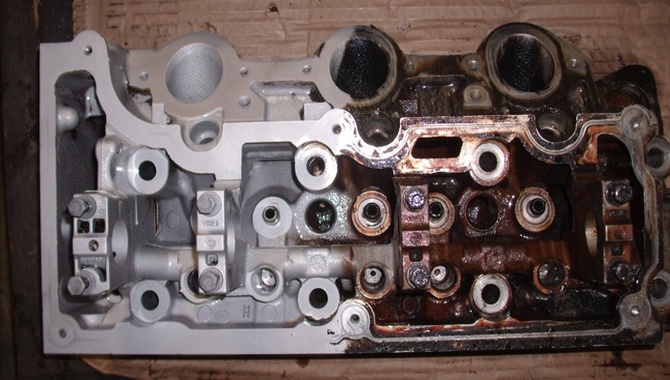
- Safety Equipment: Wear safety glasses, gloves, and a protective mask to protect yourself from potential hazards.
- Cleaning Solvent: Select a suitable solvent for cleaning, such as a carburetor cleaner or a dedicated engine parts cleaner. Make sure it is compatible with the materials used in the SBC heads.
- Soft-Bristled Brush: Use a soft-bristled brush to scrub the surfaces of the SBC heads. Nylon or brass brushes are often preferred to avoid damaging delicate components.
- Compressed Air: A compressed air source or an air compressor will help you remove loose debris, dirt, and residue from the heads’ various crevices.
- Cleaning Rags or Towels: Have a supply of clean, lint-free rags or towels to wipe down the heads and remove excess cleaning solvent.
- Wire Brushes: Small wire brushes can be useful for cleaning hard-to-reach areas or for removing stubborn deposits on the heads.
- Plastic Scrapers: Non-metallic scrapers or plastic putty knives can be used to gently scrape off any gasket material or other residues from the head surfaces.
- Parts Tray or Container: Use a container to keep small components and fasteners organized and prevent them from getting lost during cleaning.
- Shop Vacuum: A shop vacuum cleaner can be handy for removing loose debris and cleaning up the work area after the cleaning process is complete.
- Workbench or Work Area: Set up a dedicated work area to safely clean and handle the SBC heads. Make sure it is well-ventilated and has adequate lighting.
How To Clean SBC Heads – Step-By-Step Guide
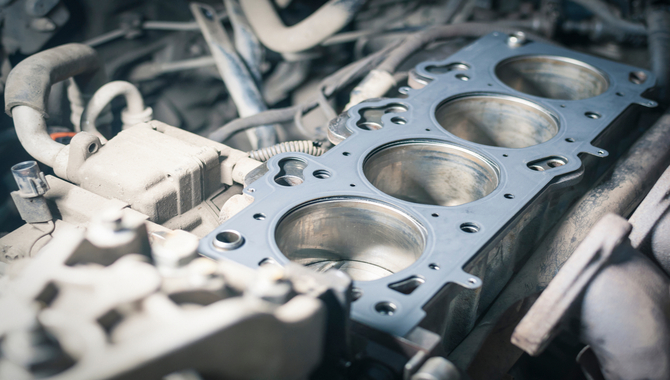
Cleaning SBC (Small Block Chevy) head is an important step in maintaining the performance of your engine. Here’s a step-by-step guide on how to clean SBC heads. It’s essential to wear safety goggles, gloves, and a protective mask before starting the cleaning process.
Step 1: Safety Precautions Ensure the engine is cool and disconnected from the power source. Remove the SBC heads from the engine block if necessary.
Step 2: Initial Cleaning Use a plastic scraper or nylon brush to remove any loose debris or gasket material from the surface of the heads.
Step 3: Degreasing Spray engine degreaser or carburetor cleaner liberally onto the surface of the heads. Allow the cleaner to penetrate and break down the oil and grime for a few minutes. Follow the manufacturer’s instructions for the specific cleaner you are using.
Step 4: Scrubbing Take a soft-bristle brush or toothbrush and scrub the entire surface of the heads, paying attention to the crevices, valve seats, and combustion chambers. Apply moderate pressure to remove stubborn residue.
Step 5: Rinse Thoroughly rinse the heads with clean water to remove the degreaser or carburettor cleaner. You can use a hose or a bucket of water for this step.
Step6: Drying Using compressed air, carefully blow-dry the heads to remove any remaining water. Make sure to blow air into all the nooks and crannies of the heads.
Step 7: Final Inspection Inspect the heads for any signs of remaining dirt, debris, or gasket material.
Step 8: Reinstallation Once the heads are thoroughly cleaned and dried, you can reinstall them back onto the engine block using new gaskets and following the appropriate torque specifications.
Safety Precautions Before Cleaning
Safety precautions are critical when it comes to cleaning. Before any cleaning activity, it is essential to take all necessary precautions to safeguard your health and that of those around you. Firstly, you should wear protective gear such as gloves, goggles, and a face mask.
These items protect you from harmful chemicals and other debris that may cause allergies or respiratory problems. Secondly, ensure that the area you are cleaning is well-ventilated. Proper ventilation will prevent you from inhaling toxic fumes that may cause dizziness, headaches, and even death.
You use chemicals, read the instructions carefully and follow them to the letter. Never mix chemicals, as this may cause a chemical reaction that may harm you. If you have pets or children, keep them away from the area you are cleaning. They may accidentally ingest the chemicals or step on wet surfaces, causing them to slip and fall. Finally, always have a first aid kit on standby in case of accidents.
Removing SBC Heads For Cleaning

One should not overlook the essential task of removing the heads for cleaning when maintaining a Small Block Chevy (SBC) engine. With the right tools and some knowledge, you can remove the SBC heads relatively easily, although the process may seem daunting at first.
The first step is draining the engine’s coolant and removing the valve covers. First, remove the rocker arms and pushrods, then remove the exhaust and intake manifold.
Loosen the head bolts and lift off the heads of the engine block after removing all these components. It is important to track which head goes on which side of the engine, as they are not interchangeable.
Once you remove the heads, you can thoroughly clean and inspect them for any signs of damage or wear. You can replace the valves and resurface the heads if necessary.
Reinstalling SBC Heads After Cleaning
Reinstalling SBC (Small Block Chevy) heads after cleaning is a crucial step in maintaining the performance of your engine. Before reinstalling the heads, you must thoroughly clean them and remove any debris or residue.You can soak the heads in a cleaning solution or use a wire brush to scrub any buildup. Once the heads are clean, it’s time to reinstall them onto the engine block.
Start by applying a thin layer of gasket sealer to both the block and the head gasket, then carefully place the gasket onto the block. Next, lift the head onto the block and align it with the dowel pins.
Tighten the head bolts in the correct sequence and torque them to the manufacturer’s specifications. You should also ensure that you put the pushrods back in their proper positions and adjust the rocker arms properly.
Testing SBC Heads After Cleaning
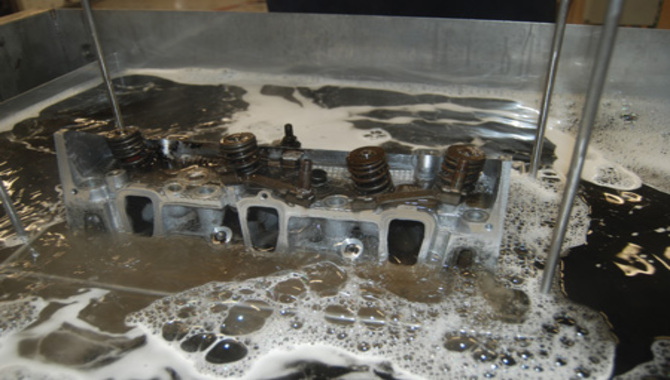
After thoroughly cleaning your SBC (Small Block Chevy) heads, it is imperative to conduct a testing process to ensure that they are functioning correctly. Testing SBC heads after cleaning is crucial in determining the success of the cleaning process and ensuring the performance of the engine.
The first step in testing the heads is to inspect the gasket surfaces for any signs of warping or damage. Next, you must check the valve guides and seats for any signs of wear or damage.
You can perform a leak-down or compression tests to test the heads. The leak-down test involves pressurizing the cylinder and measuring the amount of air leaking out. This test can help you identify any leaks that may affect engine performance.
On the other hand, the compression test measures the engine’s overall compression and helps you identify any issues with the cylinder. Once you have completed the testing process, you can reassemble the heads onto the engine block.
Maintenance Tips For SBC Heads
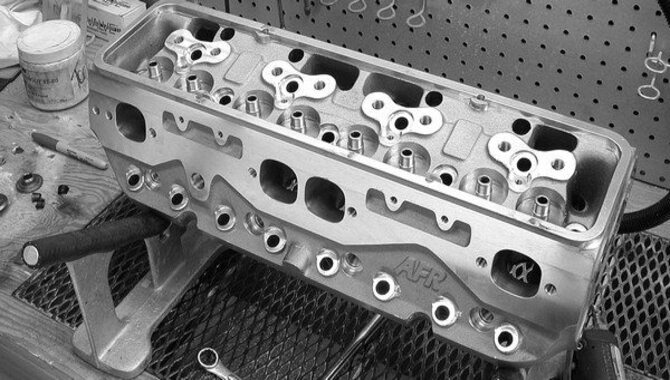
If you’re a car enthusiast and own a car with SBC heads, keeping your engine in the best possible condition is important. Here are some maintenance tips to help you keep your SBC heads in shape. First and foremost, you should make sure you change your oil regularly.
This basic maintenance tip applies to all engines but is especially important for SBC heads. Regular oil changes help to keep your engine lubricated and clean, which can help prevent damage to your head. Additionally, you should ensure that your cooling system is functioning properly.
Overheating can cause serious damage to your SBC heads, so ensure you’re monitoring the temperature gauge and addressing any issues immediately. Another important tip is to check your valve covers regularly. This is a common area for leaks, which can lead to oil buildup and other problems.
conclusion
Cleaning SBC heads is an essential maintenance task that should not be overlooked. So Knowing how to clean SBC heads is essential. The procedure may seem daunting initially, but with the right tools and knowledge, it can be done efficiently and effectively.
Remember to take the necessary safety precautions, such as wearing protective gear and working in a well-ventilated area, to avoid any accidents.
By following the comprehensive guidelines outlined in this post, you can ensure that your SBC heads are clean and functioning at their best, ultimately improving your engine’s performance and longevity.
FAQ
1.Why Is It Important To Clean SBC Heads?
Ans: Cleaning SBC heads is crucial for maintaining engine performance, removing carbon deposits, and ensuring proper
2.Can I Clean SBC Heads Without Removing Them From The Engine?
Ans: Removing the heads for a thorough cleaning is generally recommended, as it allows better access and prevents debris from entering the engine cylinders.
3.What Is The First Step In Cleaning SBC Heads?
Ans: Start by removing the heads from the engine block and place them on a clean workbench or surface.
4.How Do I Apply The Cleaning Solvent To The Heads?
Ans: Spray or soak the heads in the solvent, ensuring that all surfaces and crevices are adequately covered. Follow the manufacturer’s instructions for the specific solvent being used.
5.Can I Use Compressed Air To Clean SBC Heads?
Ans: Yes, compressed air is effective for blowing away loose debris, dirt, and residue from the heads. Ensure proper safety precautions and use appropriate air pressure.


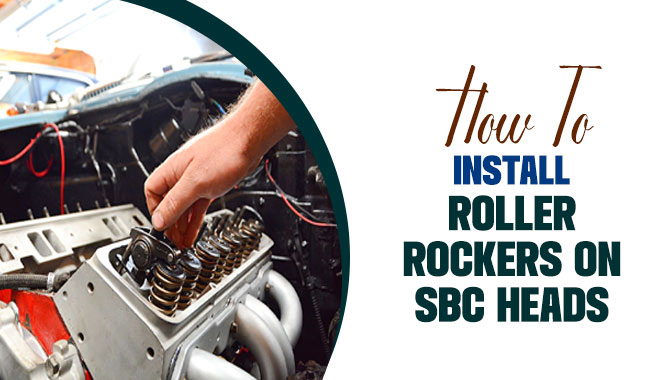
![SBC Main Cap Torque Sequence [Effective Ways]](https://accuratepicker.com/wp-content/uploads/2022/03/SBC-Main-Cap-Torque-Tester.jpg)

![5 Best Stock SBC Heads [Reviews With Buying Guide]](https://accuratepicker.com/wp-content/uploads/2022/03/Best-Stock-SBC-Heads-150x150-1.jpg)